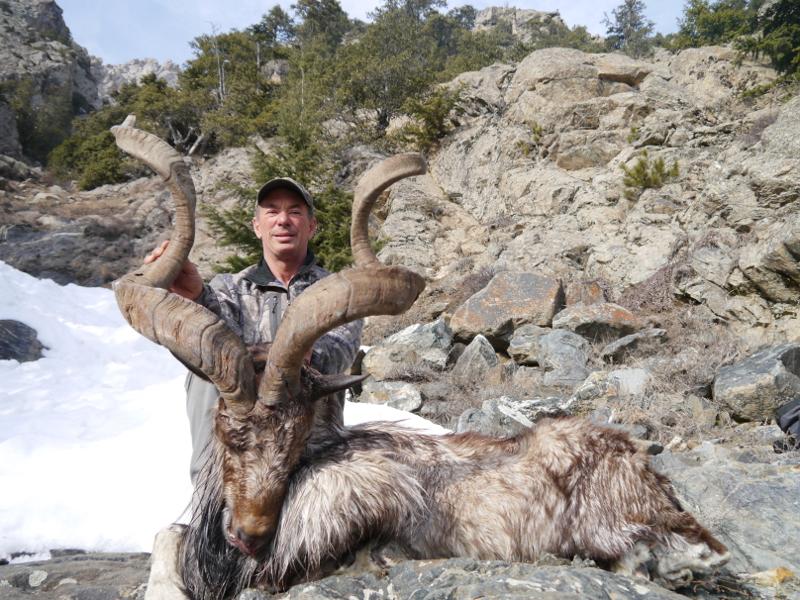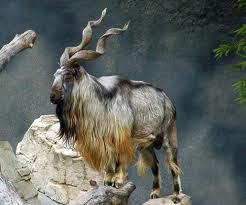How to install the app on iOS
Follow along with the video below to see how to install our site as a web app on your home screen.
Note: This feature may not be available in some browsers.
You are using an out of date browser. It may not display this or other websites correctly.
You should upgrade or use an alternative browser.
You should upgrade or use an alternative browser.
Chitral Gol National park - Documentary
- Thread starter ghazi52
- Start date
ghazi52
PDF THINK TANK: ANALYST

- Joined
- Mar 21, 2007
- Messages
- 101,742
- Reaction score
- 106
- Country
- Location


Superb Markhor



Trophy Hunting

Trophy hunting (for Markhor or Ibex) means a legal hunting of mature male Markhor or Ibex for trophy purpose. Trophy hunting of Markhor (Capra falconeri kashmeriensis) and Ibex (Capra ibex himalayenis) is permissible in the province of Khyber Pakhtunkhwa (Pakistan), subject to such rules and regulations as are provided in the Khyber Pakhtunkhwa Wildlife (Protection, Preservation, Conservation and Management) Act, 1975. The hunting of Markhor and Ibex is otherwise prohibited under the general ban imposed by the Govt. of Pakistan and their hunting in Khyber Pakhtunkhwa is allowed, as a special case, only in the Community Managed Conservation Areas.
Markhor is appendix-I species to the Convention on International Trade in Endangered Species of Wild Flora and Fauna (CITES), which is considered most endangered and threatened with extinction and CITES prohibits international trade/traffic in specimens of this species. When it is allowed as a special case, it is authorized by granting of both an export permit (or re-export certificate) and import permit. To make an incentive for communities to conserve the Markhor species the 12th Conference of Parties (CoP) of CITES, held in Santiago, Chile, in 2002, has allowed 12 Markhor annual export quota form Pakistan from Community Managed Conservation Areas. National Council for Conservation of Wildlife (NCCW)- Pakistan further allots this quota to the Provinces and Administrative Units in Pakistan where the animal is available and can be hunted under the CITES conditions. NCCW is the focal point and Scientific Management Authority of CITES in Pakistan.
Ibex is appendix-II species to the CITES which is considered to become threatened with extinction unless trade/traffic in its specimens is closely controlled. This is authorized by granting an export permit (or re-export certificate); and no import permit is necessary. There is no fixed quota for Ibex, from CITES however, an export permit from NCCW is required and the NCCW has fixed an annual quota of 10.
Hunting of Markhor and Ibex is an extremely challenging sport and requires complete physical fitness and patience. The hunter should be prepared for rugged terrain, difficult slopes and extremely cold weather during the hunting season.


ghazi52
PDF THINK TANK: ANALYST

- Joined
- Mar 21, 2007
- Messages
- 101,742
- Reaction score
- 106
- Country
- Location

Chitral National Park
Posted by: Bisma Umair
Pakistan is blessed with variety of beautiful parks. Chitral National park is among all these recognized parks. This park is situated in Chitral district in Khyber Pakhtunkhwa and besides the Chitral River. It is also identified as Chitral Gol National Park. Until 1983, Mehtar of Chitral considered Chitral Gol as their private property. There was difference of opinion between Mehtar of Chitral and the Government of Pakistan, regarding the status of the park but according to the current result conducted by theSupreme Court of Pakistan was that the entire park will be the personal property of His Highness.

The park has very narrow and dangerous way leading to it and during rainy season it becomes more unsafe. It is sited between 1450 meters and 5000 meters above the sea level and includes an area of about 77.5 square km. Chitral National Park incorporates almost three valleys. Quite a lot of glaciers lie down in the park through which quite a few springs make their approach and eventually structure a stream of 18 meters.

This park also act as a save heaven to vast range of animals particularly to Markhor, a wild goat speciewhich is in danger of extinction. Astor Markhor is the subspecies that are also found in the park. During 1980, almost 500 to 200 individuals were found in the park but still park contains the largest population of Astor Markhor in the world. The park encompasses numerous diverse species of flowering plants, Aves and mammals.

Deodar plant is widely found here and Aves includes birds like Golden Eagle, Himalayan Griffon Vulture, Peregrine Falcon, Chukar Partridge, Bearded Vulture, Snow Patridge, Himalayan Monaland Demoiselle Crane. Ladakh Urial, Yellow-throated Marten, Himalayan Black Bear, Tibetan Wolf, Astor Markhor, Red Fox, Siberian Ibex and Snow Leopard are the animals that exist in this park.

The weather of the park remains beautiful as the annual rainfall of this area is estimated to be 462 ml but during September it rains very much on the magnificent peaks adjacent to the park. On the other hand it rains more in November on the valleys and on the lower peaks. In winter season there is also a session of snowfall which covers the white peaks and adds beauty to the park till June and after that the snow starts melting. Generally the weather of the park remains cold and dry and its temperature varies from 12.2 to 43.3 degree centigrade
Talha Asif
FULL MEMBER

- Joined
- Jan 14, 2014
- Messages
- 467
- Reaction score
- 1
- Country
- Location
Similar threads
- Replies
- 3
- Views
- 224
- Replies
- 0
- Views
- 287
- Replies
- 9
- Views
- 633
- Replies
- 0
- Views
- 336


